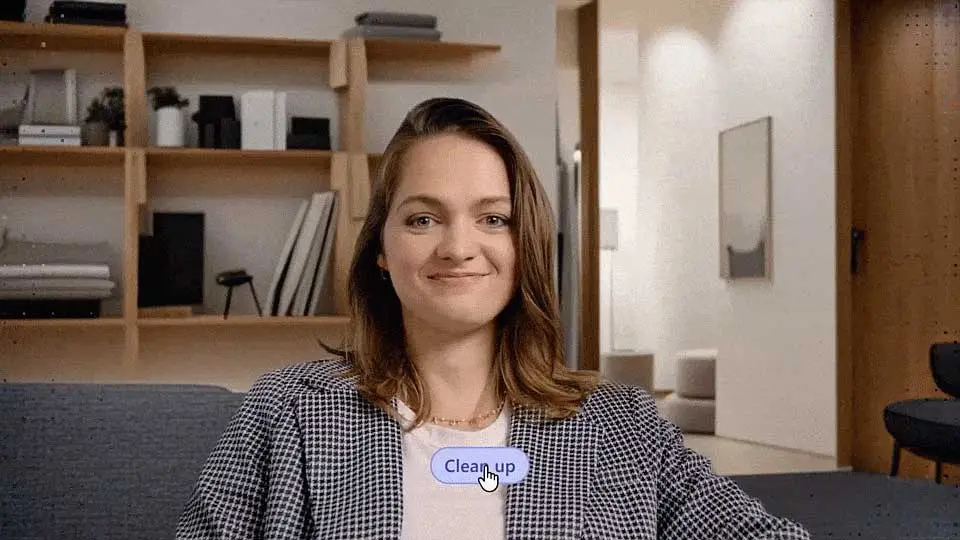The impact of technology in interior design is in full swing. AI-driven tools are currently reshaping how spaces are envisioned and crafted. Microsoft Teams’ recent AI-driven features at Ignite 2023 have offered a glimpse into the future of workspace customization, balancing futuristic elements with pragmatic functionalities for everyday work environments.

Ignite 2023, Microsoft’s annual IT pro conference from November 15–16, has revealed Teams updates. Among these, AI-driven voice isolation and a “decorate your background” feature stand out. Voice isolation, reducing background noise and voices, rolls out in 2024. The “decorate your background” feature arrives in Teams Premium next year.
Immersive spaces in Teams are coming, allowing avatars in 3D environments and activities like gaming or virtual marshmallow roasting. Microsoft Mesh for these spaces becomes available in January. These additions, however, might not be everyone’s cup of tea.
Useful features include customizable emoji reactions, forwarding chats, and new IT management tools. Moreover, enhancements from the re-architected Teams app extend to web experiences, promising better performance and efficiency.
AI’s influence isn’t limited to Microsoft. A surge in AI-powered interior design apps is evident, driven by startups like Reimagine Home and CollovGPT. These platforms offer AI-generated room improvements based on user inputs, attracting millions of visitors and intriguing real estate agents and furniture retailers.
Meanwhile, the excitement around AI interior design apps comes with bugs and limitations. Glitches in beta software and AI’s learning curve plague these platforms. They often struggle with differentiation and accuracy in identifying items or generating designs. However, advancements like ControlNet have enhanced precision, enabling these tools to better adhere to original space parameters.
For interior designers, AI opens doors with AI-powered design tools, VR/AR experiences, personalized recommendations, predictive analytics, and enhanced communication tools. These advancements are revolutionizing design creation and client engagement.
In this regard, Microsoft Teams has taken a step forward. Its ‘decorate your background’ feature takes a unique spin, analyzing a user’s room and enhancing it virtually – eliminating clutter or adding foliage to spruce up the setting. However, these enhancements are slated for release in early 2024, with immersive spaces in Teams, utilizing the metaverse hype, available in January.
Moreover, Teams also introduces pragmatic functionalities: customizable emoji reactions, improved chat forwarding, and tools for efficient IT management. Performance enhancements promise double the speed and reduced memory usage for web users on Edge and Chrome.
In the context of AI’s increasing transformative role in interior design, it’s not without its hurdles. But the potential for efficiency gains and unique design concepts is significant.
Are you incorporating AI in your design process? Share your experiences in the comments below.
- AI-Powered PCs: Overhyped Trend or Emerging Reality? - August 21, 2024
- Princeton’s AI revolutionizes fusion reactor performance - August 7, 2024
- Large language models could revolutionize finance sector within two years - March 27, 2024


